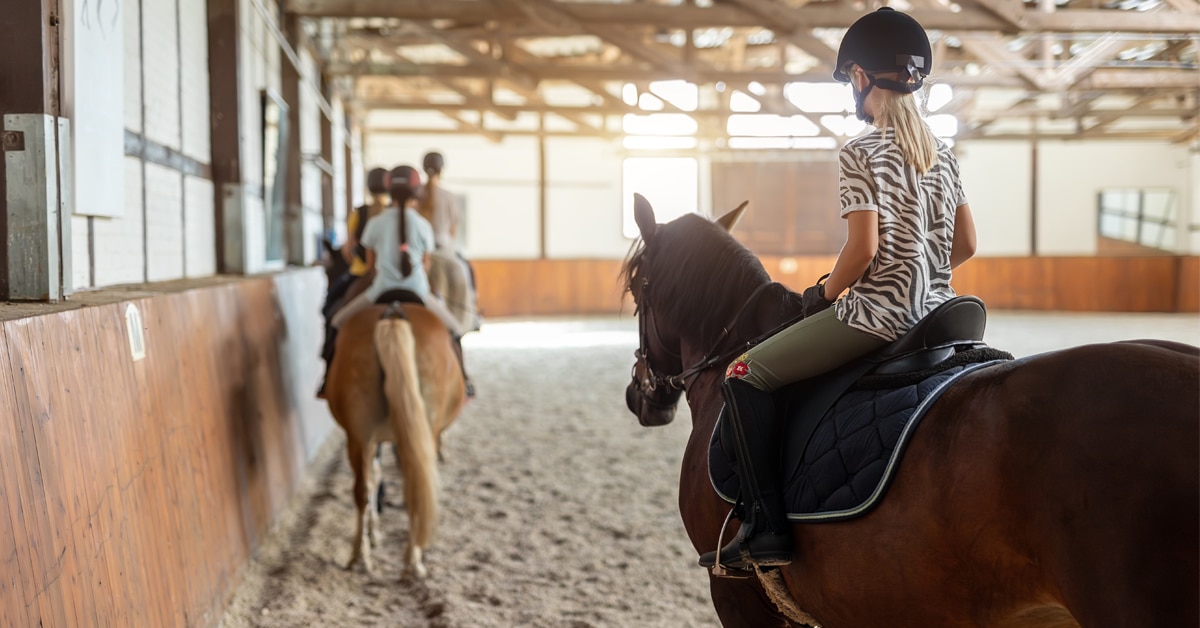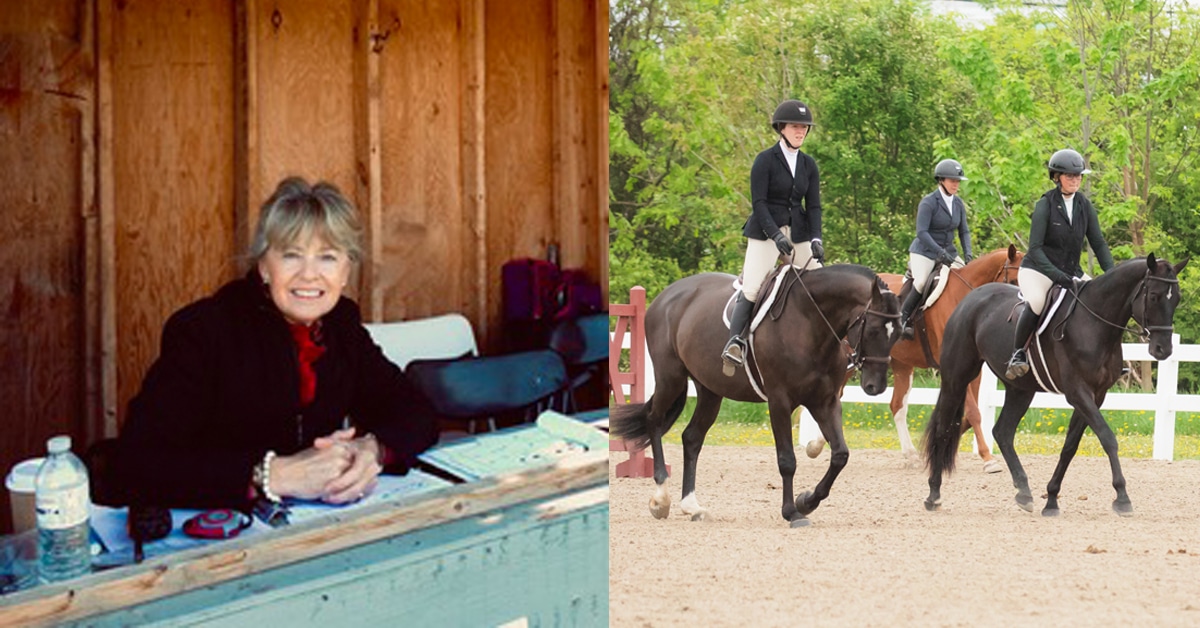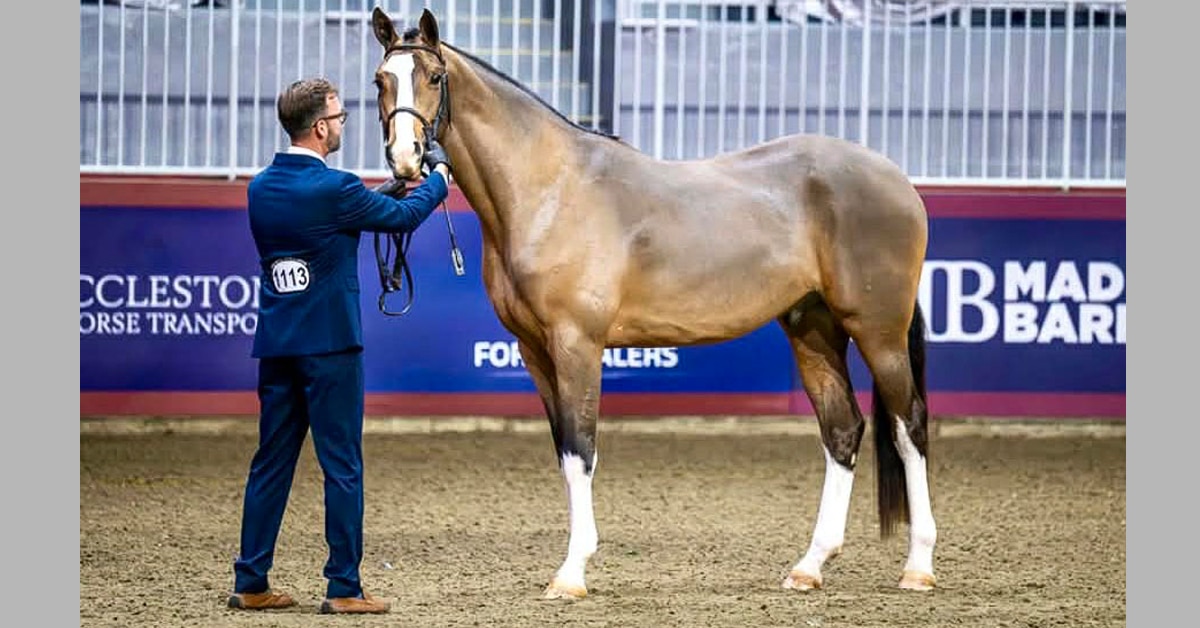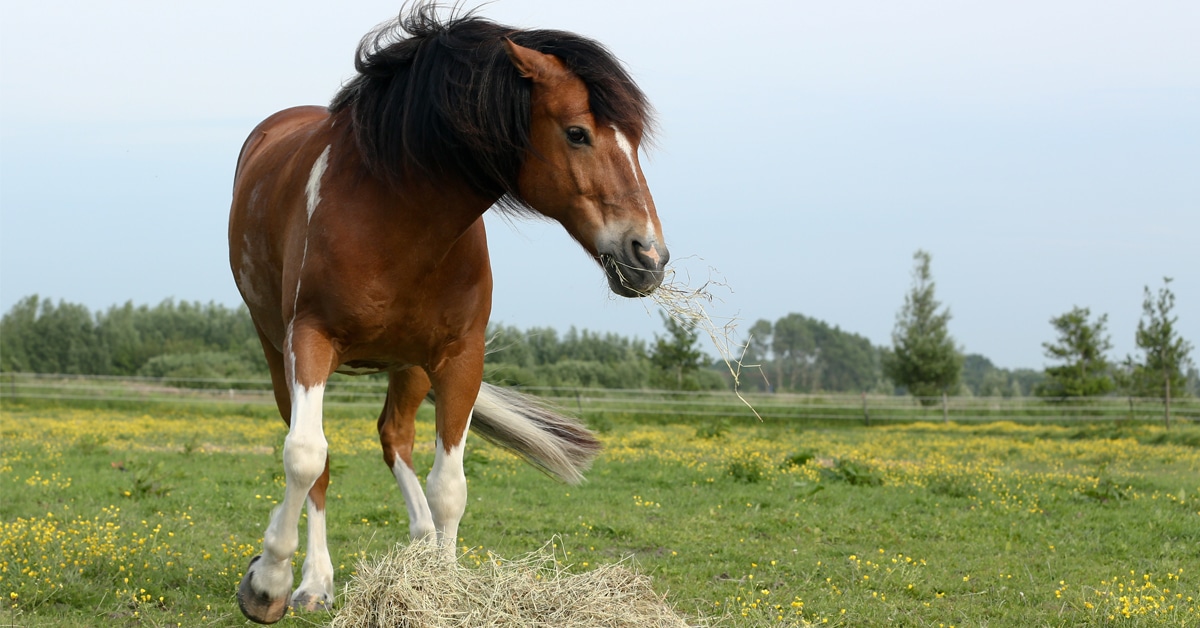Could there be variations of structure – within the confines of how a good dressage horse must be constructed – that could explain the differences in performance abilities?
A Trend
I have noticed a trend at the top levels of the sport (Olympics, World Cup Finals, World Equestrian Games, etc.) in the last decade or so: those horses that excel at the collected movements (particularly piaffe and passage) tend to have an ilium side (point of hip to point of buttocks) that is ‘flatter’ than those that excel in extension. A flatter ilium side could also be described as showing less slope from point of hip to point of buttocks, or as the ilium being closer to being parallel to the ground. Regardless of the terminology, the result is that those individuals shine in piaffe and passage, especially if the angle formed between ilium side and femur side is larger (more open).
That being said, the ilium/femur angle is not the only factor for superior abilities at either collection or extension. Horses with lower stifle placement, as determined by how far the stifle’s protrusion (not the actual patella) is below the bottom of the sheath on a male horse (or where a sheath would be if judging a female horse) in general, have a longer stride due to the increased range of motion that the lower stifle allows. Such horses also have to compress more to please the riders, trainers, and judges in the advanced movements in collection.
Horses with higher stifles (at or just below the bottom of the sheath) do not have to compress as far for upper-level collection, but conversely, do not have the range of motion of the hind leg for the big stride.
Naturally, the range of motion of the foreleg from the top of the scapula to the knee and the factors for lightness of the forehand also play a role in upper-level movements. Other desireable traits include a high point of shoulder, a base of neck well above the point of shoulder, and the pillar of support (a line that runs from the centre of the foreleg to the top of the horse and the ground) emerging well in front of the withers.
Sample Horses
Our sample horses were both capable at the very top levels of the sport, but each had a particular strength. The grey horse, Balagur, was noted for his outstanding passage and his ability to sustain that difficult movement. The liver chestnut horse, Don Schufro, had a fabulous extended trot, just like many other offspring of Donnerhall.
Both horses have the general traits required of a top dressage mount: good LS (lumbosacral gap, or high point of croup) placement, an ilium side shorter than the femur side, stifle placement at or just below sheath level and all the above-mentioned factors for lightness of the forehand.
Where these two Olympians differ most from a structural perspective is in the slope of the ilium side and the angles between ilium and femur.
In general terms, the mechanics of the gaits (in particular piaffe, passage or extended trot) are affected by the differences in ilium/femur angulation. The very thing that makes extension easier usually precludes a superior ability to collect and vice versa. Perhaps having a flatter ilium side allows for cadence with little or no forward movement without stress while detracting somewhat from the suspension we praise in extended trot. Likewise, it may be the slightly more sloped ilium that facilitates brilliant extension, but hinders the ability to sustain piaffe and passage without the tendency to lose the rhythm.
A Caution
A horse with a flatter ilium plus a femur side that is shorter than the ilium side (an undesirable trait) would be at a disadvantage for upper level dressage and would likely not be a piaffe/passage specialist for very long. The shorter femur changes the ellipse of the stride. Short-femured horses move with the hock further behind their haunches and have less reach underneath the torso. Although one may think they appear to flex their hocks more, closer examination will show that to be a bit of an optical illusion.
Construction that includes a femur side shorter than the ilium side, while giving the appearance of powerful hindquarters to the uneducated eye, exerts excessive pressure from the hock down in the highly collected gaits. It is not uncommon for lameness to be a factor long before reaching the level where piaffe and passage are required aspects of the test.
A Tale of Two Stallions
Balagur – AN UNLIKELY DRESSAGE HORSE
The comparatively small stallion Balagur – an Orlov Trotter by birth – had been too slow pulling a sulky on the racetrack as a young horse in Russia. He was sent to the police department in the Russian town formerly known as Gorky and served as a police horse for a few years before a young Russian dressage rider, Alexandra Korelova, who kept her horses at the same stables, noticed his talent. He became a world-class contender, including a fifth-place finish at the 2008 Olympic Games. Balagur, now 27, at last report resided at Monica Theodorescu’s barn in Germany, where he continued to be ridden daily as a schoolmaster well into his 20s.
Blue Hors Don Schufro – PASSING ON THE TALENT
Andreas Helgstrand and the Oldenburg stallion Don Schufro helped the Danish Dressage Team secure their first-ever Olympic team medal at the 2008 Olympic Games in Beijing, China. Now 32, Don Schufro’s progeny continue to dominate the dressage arena; his daughter, Weihegold, ridden by Isabell Werth, recently won an Olympic gold medal for Germany at the 2016 Rio Games, as well as individual silver, and went on to take the 2017 World Cup Dressage Final in Omaha, NE.
The Latest










